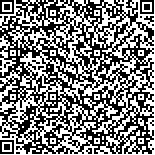|
| 引用本文: | 姜宗辰,马毅,杨俊芳.基于自扩展深度置信网络的原油油膜绝对厚度反演研究[J].海洋科学,2021,45(3):94-107. |
| |
|
| |
|
|
| 本文已被:浏览 1186次 下载 792次 |

码上扫一扫! |
|
|
| 基于自扩展深度置信网络的原油油膜绝对厚度反演研究 |
|
姜宗辰1,2, 马毅2,3, 杨俊芳4
|
|
1.山东科技大学测绘科学与工程学院, 山东 青岛 266590;2.自然资源部第一海洋研究所, 山东 青岛 266061;3.西北工业大学 空天地海一体化大数据应用技术国家工程实验室, 陕西 西安 710729;4.中国石油大学(华东) 地球科学与技术学院, 山东 青岛 266580
|
|
| 摘要: |
| 海上溢油事故危害海洋生态安全、人类健康与经济发展。开展基于遥感技术的海面溢油量的估算研究,对于保护海洋生态环境具有重要意义,而油膜厚度反演是溢油量估算的核心环节。本文通过搭建室外实验场景,模拟真实海面溢油环境,基于现场实测高光谱遥感数据,开展海面溢油厚度反演研究。本文将深度学习与遥感技术融合,提出了基于自扩展深度置信网络的油膜厚度反演模型(oil thickness inversion generative adversarial and deep belief network,OG-DBN)。该模型由油膜光谱特征数据自扩展模块与油膜绝对厚度反演模块两部分组成。光谱特征数据自扩展模块能够基于实测高光谱遥感数据,自动筛选出光谱可分性较好的光谱特征区间,进而基于对抗生成网络(generative adversarial network,GAN)进行样本扩展,增强模型的泛化性;油膜绝对厚度反演模块则是基于深度置信网络(deep belief network,DBN),深度挖掘不同厚度油膜光谱特征数据的光谱特性信息,精确反演油膜的绝对厚度。实验结果表明,本文提出的OG-DBN模型在可控实验条件下,原油油膜绝对厚度反演精度达到97.69%,决定系数R2为0.980,平均差控制在±0.06%;模型鲁棒性测试表明,该模型仍能保持较为稳定的反演精度,均高于93.33%,R2大于0.957以上,平均差在±0.6%以内。 |
| 关键词: 海洋遥感 原油油膜 绝对厚度 深度学习 深度置信网络 生成对抗网络 |
| DOI:10.11759/hykx20200424004 |
| 分类号:P237 |
| 基金项目:国家自然科学基金重大项目(61890964);山东省联合基金(U1906217);国家自然科学基金青年项目(41706208) |
|
| Inversion of absolute thickness of crude-oil film based on self-expanding deep belief network |
|
JIANG Zong-chen1,2, MA Yi2,3, YANG Jun-fang4
|
|
1.College of Geomatics, Shandong University of Science and Technology, Qingdao 266590, China;2.First Institute of Oceanography, Ministry of Natural Resources, Qingdao 266061, China;3.National Engineering Laboratory for Integrated Aero-Space-Ground-Ocean Big Data Application Technology, Northwestern Polytechnical University, Xi'an 710729, China;4.School of Geosciences, China University of Petroleum (East China), Qingdao 266580, China
|
| Abstract: |
| Marine oil spills seriously endanger marine ecological security, human health, and economic development. Thus, to protect the marine ecological environment, it is very important to carry out research into the estimation of marine oil spillages using remote-sensing technology. The thickness inversion of an oil film is the key indicator for the estimation of oil spill volume. We set up an outdoor experimental site to simulate real oil spills on a sea surface and, by using field-measured hyperspectral remote-sensing data, we study the thickness inversion of sea oil spills. In this paper, we combine deep learning with remote-sensing technology and propose an oil-thickness-inversion generative adversarial and deep belief network (OG-DBN) model. The model consists of a self-expanding module for the oil film’s spectral feature data and a module for the oil-film thickness inversion. The self-expanding module can automatically select spectral feature intervals with good spectral separability based on the measured hyperspectral remote-sensing data and then expand the number of samples using a generative adversarial network (GAN) to enhance the generalization of the model. The oil-film-thickness-inversion module is based on a DBN. It extracts the characteristics of the spectral feature data of oil films with different thicknesses, and then accurately inverts the oil film’s absolute thickness. The results show that the accuracy of absolute oil thickness inversion for the OG-DBN model proposed in this paper can reach 97.69%, the determination coefficient (R2) can reach 0.980, and the mean deviation remains within ±0.06% under controlled experimental conditions. In the model stability test, the model maintains relatively stable inversion results. The accuracy of the oil-film thickness inversion remains above 93.33%, R2 remains above 0.957, and the mean deviation is controlled within ±0.6%, which indicates excellent robustness. |
| Key words: ocean remote sensing crude-oil film absolute thickness inversion deep learning DBN GAN |
|
|
|
|
|
|
